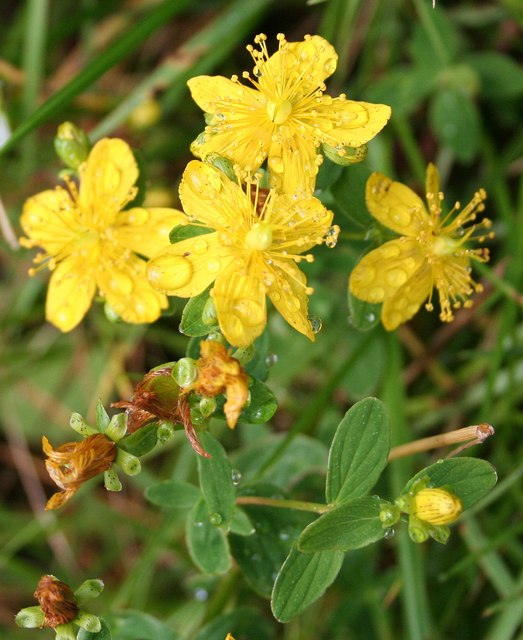 |
| Photograph of Webb House Colonial Revival Garden,by Daderot via Wikimedia Commons |
In our 21st century lives, we often reach for
bottles of pills when illness strikes. Back in the 18th century,
however, you were more likely to go out to the herb garden or even forage for
plants in the forest to relieve your distress. This week, I’ve gathered a list of some of
the commonly used medicinal plants our ancestors depended upon. Some were ingested, some rubbed on the skin, and some strewn on the floor for freshening the air and deterring vermin. You may even have some growing in your own backyard. Think of it as Nature's Medicine Cabinet!
BASIL - Sometimes called St. Joseph's Wort, it was used dried as snuff to relieve headaches and colds as well as a strewing
herb.
BEE BALM -
Used for bee stings. Tea brewed from its leaves was called Oswego tea and was
used as a substitute for Chinese tea imported from England after the 1773 Boston Tea Party (and the 1774 Edenton Tea Party, too, of course!)
CARAWAY -
The boiled roots of caraway were eaten by Native Americans and recommended for
those with a cold or weak stomach.
| Photograph of Chamomile by H. Zell via Wikimedia Commons |
CHAMOMILE -
Infused as a tea for indigestion, gas, and stomachaches. Also used as a
strewing herb and insect repellent.
COMFREY -
Used as a poultice to heal wounds and reduce swelling.
CORIANDER.
The seeds were chewed as a breath freshener.
ELECAMPANE - Used to treat skin diseases in sheep
and horses; also as a diuretic and for coughs (for people!)
FEVERFEW -
For "female hysteria," melancholia, headache, and constipation.
GERMANDER -
For gout, rheumatism, fever, and melancholy.
HOREHOUND -
Used to make a cough syrup, often in combination with honey and other herbs. Mixed with
plantain for snakebites. Soaked in fresh milk to repel flies.
HYSSOP -
Strewn on the floor to prevent the spread of infection; also used to treat
respiratory illnesses.
 |
| Photograph of Lemon Balm by P. Wagner via Wikimedia |
LAVENDER –
The oil was rubbed into the temples for headache, strewn on the floor and also used as an
insect repellent.
LEMON BALM - Infused as a tea for headaches, indigestion, nausea. Distilled
as a treatment to clean and heal wounds.
LOVAGE -
Used to treat kidney stones.
MARJORAM –Used to cure insomnia, nasal congestion, and
loss of appetite.
PARSLEY -
Seeds used as a diuretic.
| Photograph of Pennyroyal by H. Zell via Wikimedia Commons |
PENNYROYAL - Strewing herb. Flea and mosquito repellent.
PEPPERMINT – The leaves were chewed to sweeten the breath and drunk in tea to
aid digestion.
PLANTAIN - (The herb; not the banana-like fruit.) Used as a poultice to heal wounds, and the seeds to prevent miscarriage.
QUEEN ANNE’S
LACE - Used as a diuretic and
for kidney stones; the seeds were used for birth control.
ROSE HIPS –
Used to prevent scurvy. (Very high in Vitamin C.)
ROSEMARY -
Oil used as a rub for sore muscles. Promotes liver functions.
RUE -
Externally to cure warts, ringworm, and poisonous bites. Internally as a
treatment for colic and epilepsy. Decocted for earaches. (Decoction is the boiling or heating of a plant to derive its concentrated essence.)
SAGE -
Used in combination with other herbs for headaches. Decocted and as a mouthwash
for sore throats and infected gums.
 |
| Photograph of St. John's Wort by Anne Burgess via Wikimedia Commons |
SORREL –
Used as a poultice for infected wounds. (And to remove stains from linen.)
SPEARMINT –
Used as a breath freshener and for indigestion.
ST. JOHN’S WORT - Leaves used to treat burns and wounds. Flowers used as a tincture
for melancholy.
STINGING NETTLES - A mixture of the seeds, bayberries, gunpowder, and honey was
used for rheumatism.
TANSY - Its seed was used as a vermifuge (to kill internal parasites like roundworms) for children;
the root was also used to treat gout.
THYME –
Used as an antiseptic and for toothaches, gout, headaches, and to cure
nightmares. Sprigs of thyme were placed on lard and butter to keep them from
becoming rancid.
YARROW - Leaves were chewed for toothaches.
Have a good couple weeks, dear Reader. Thanks for stopping by...y'all come back now!
Kate
Kate
No comments:
Post a Comment